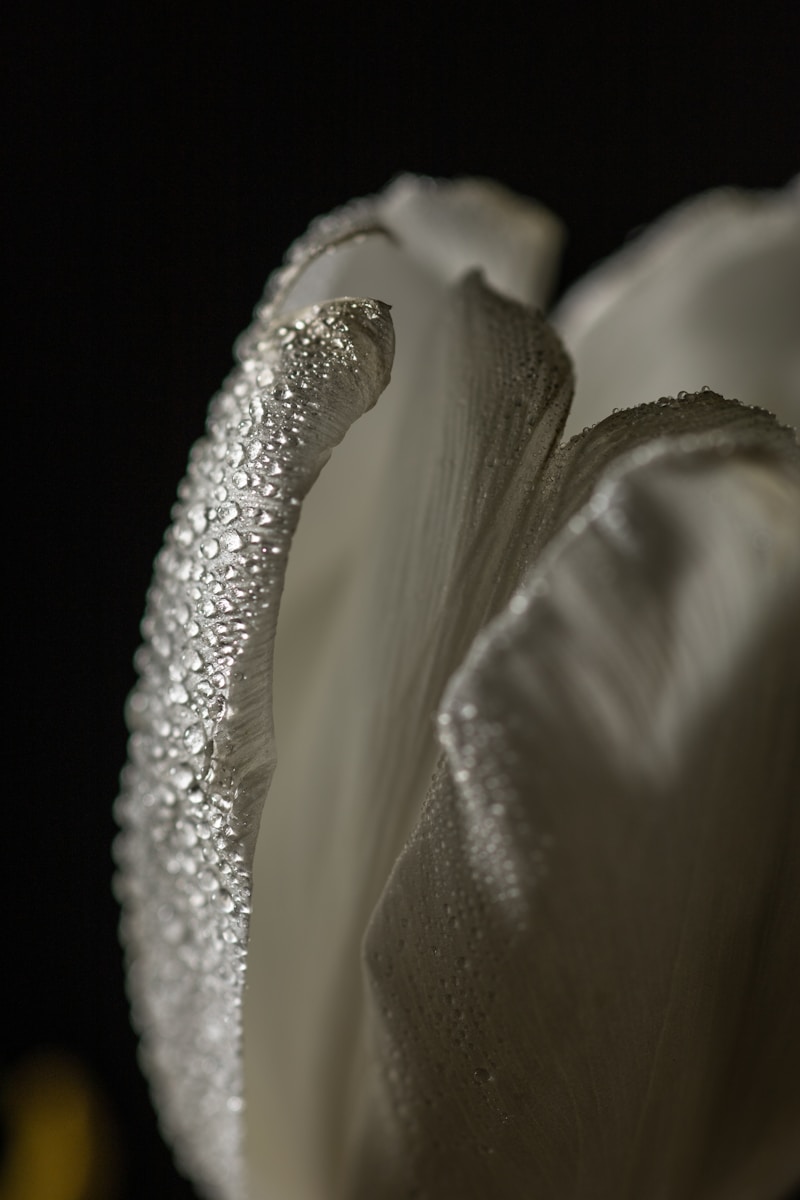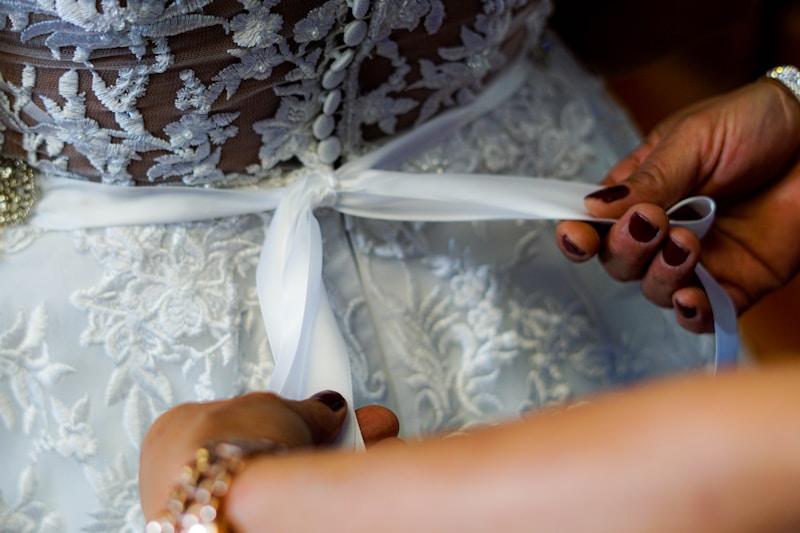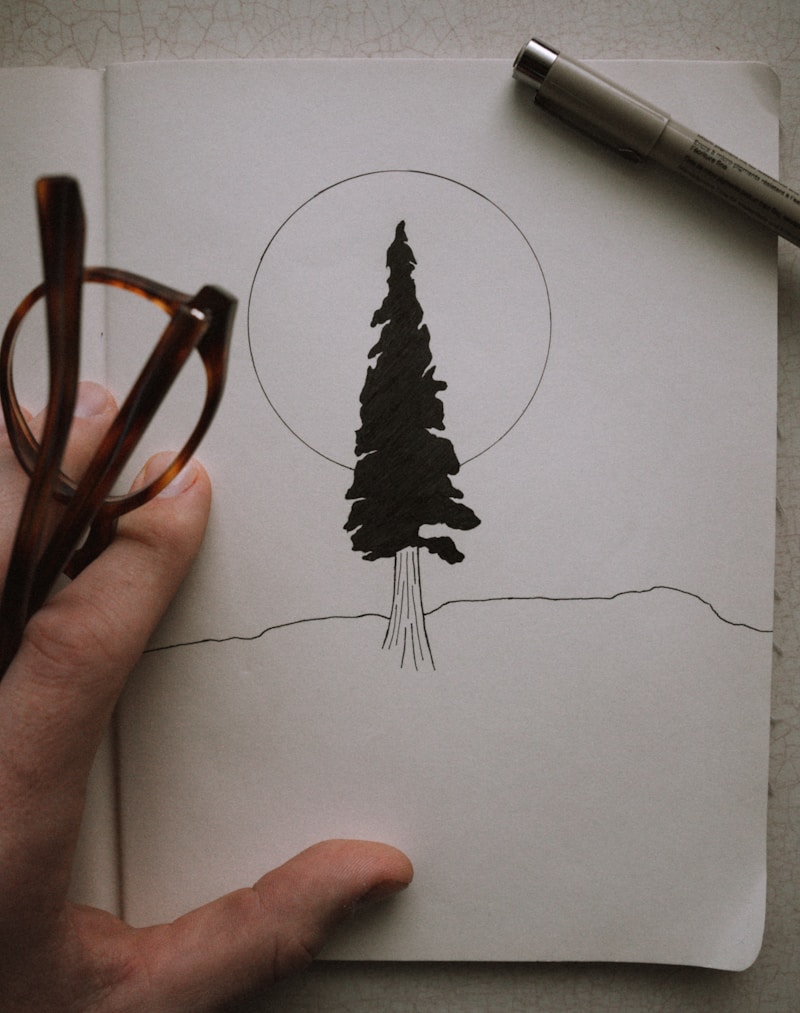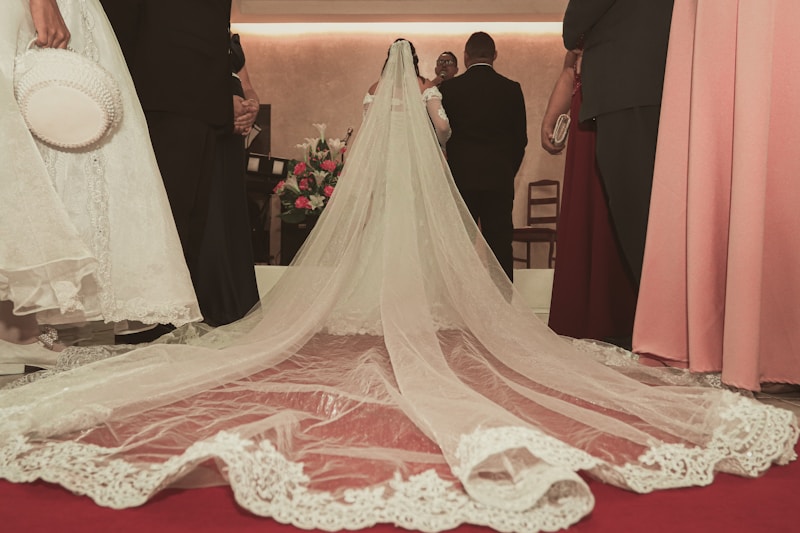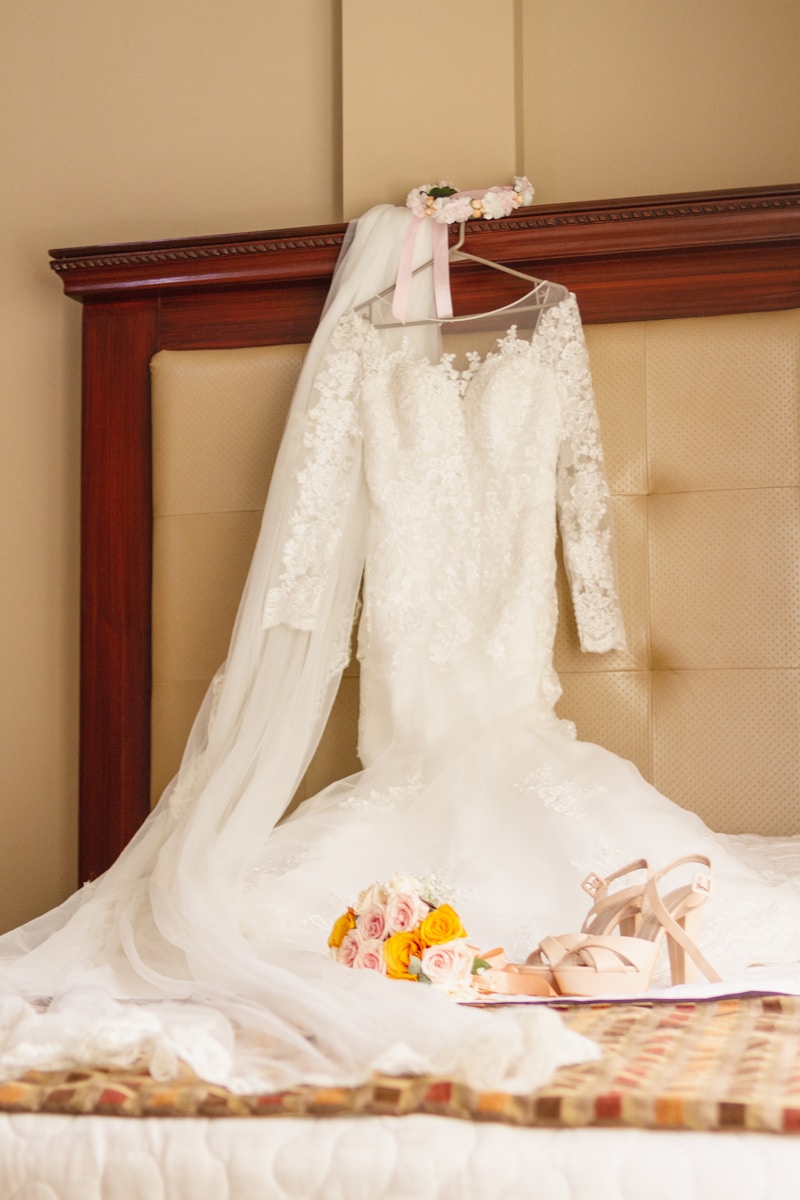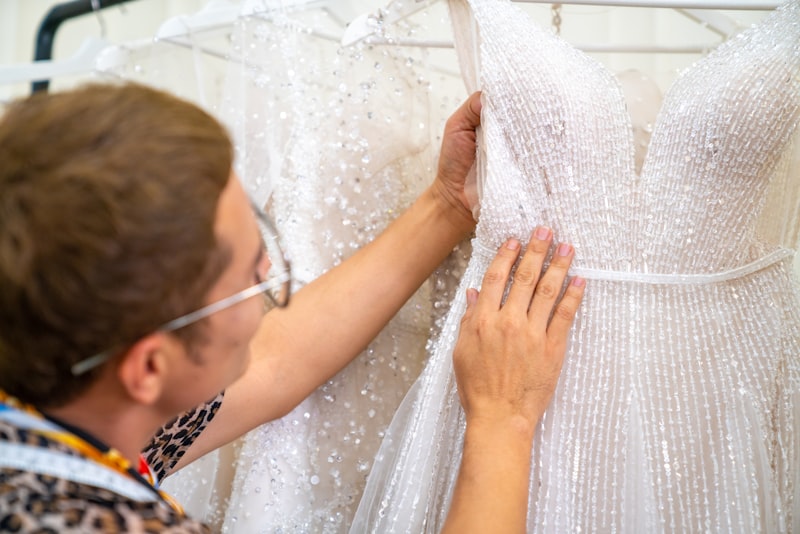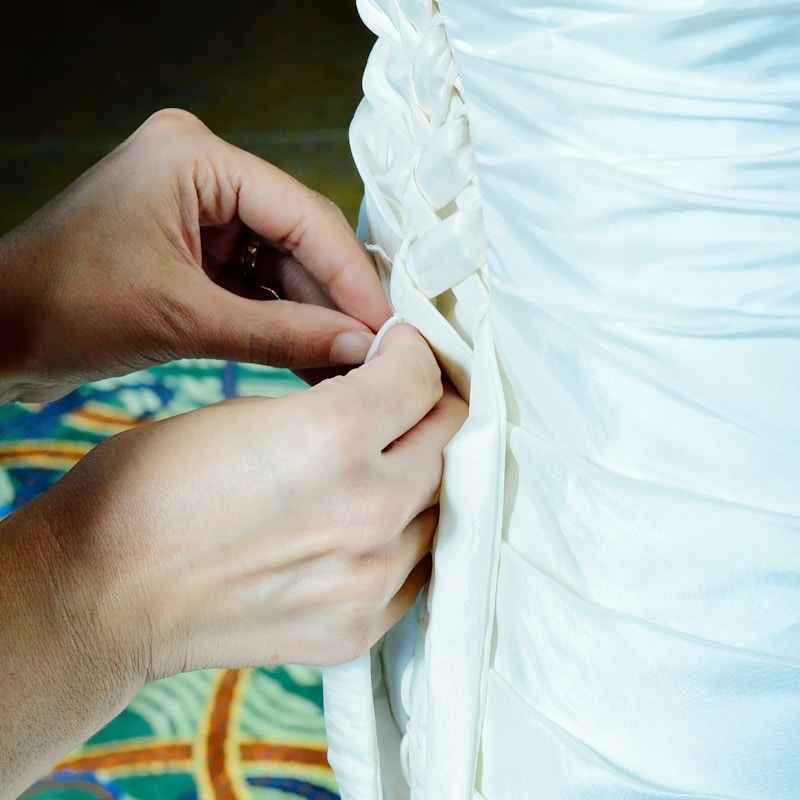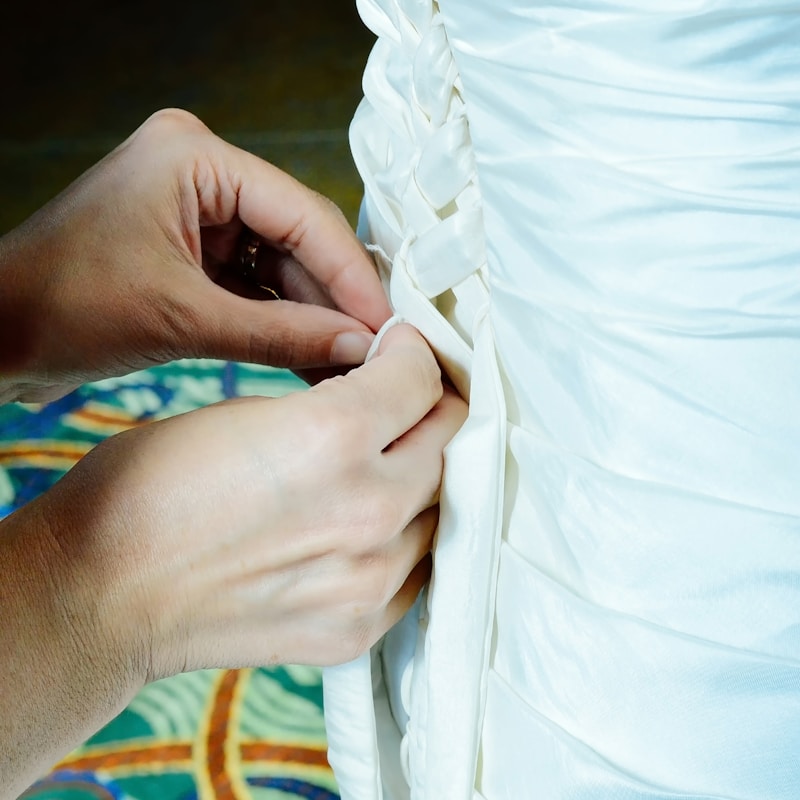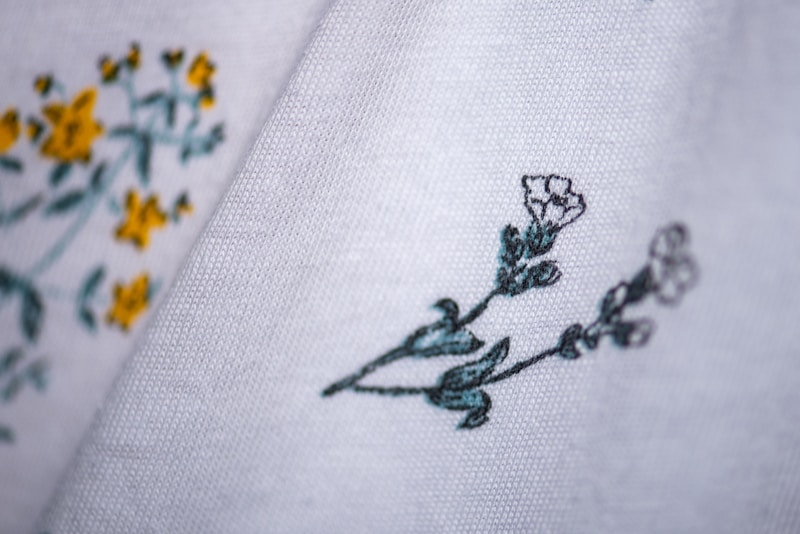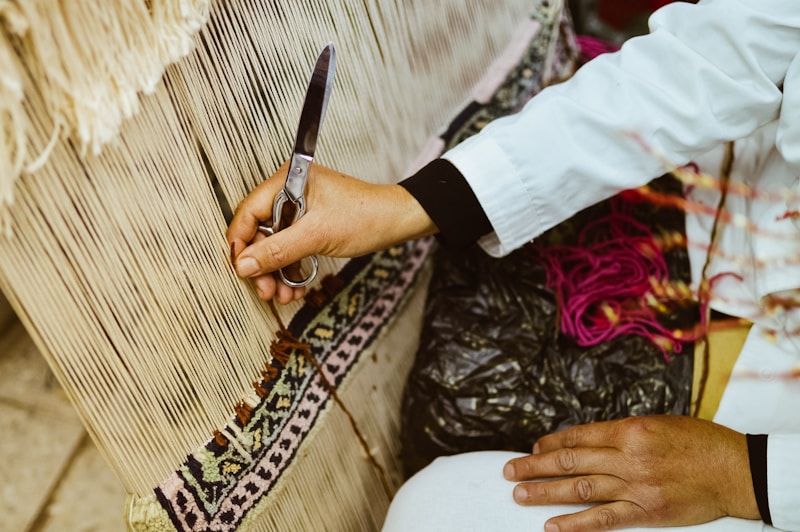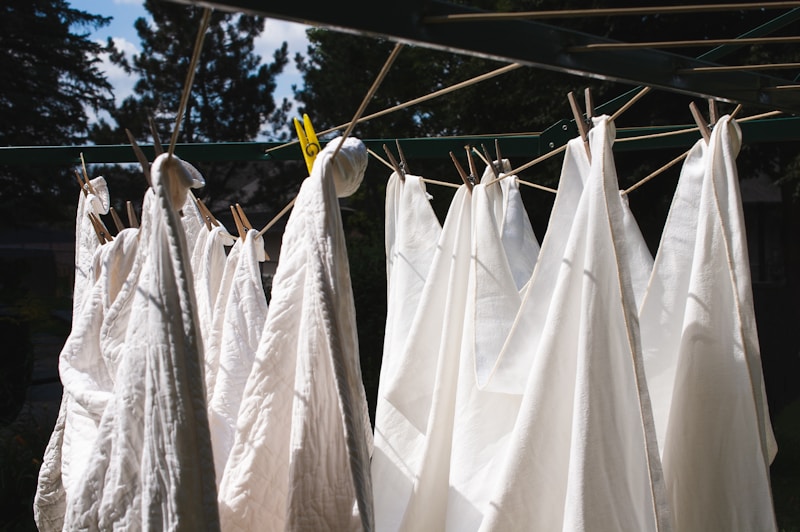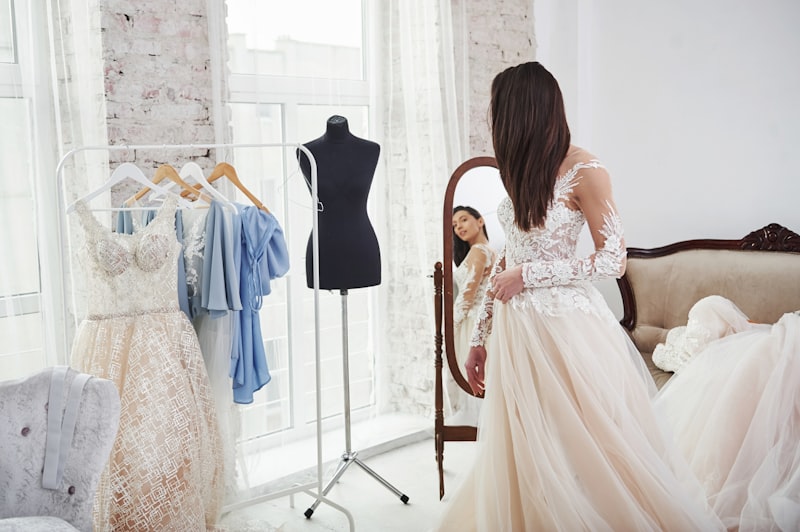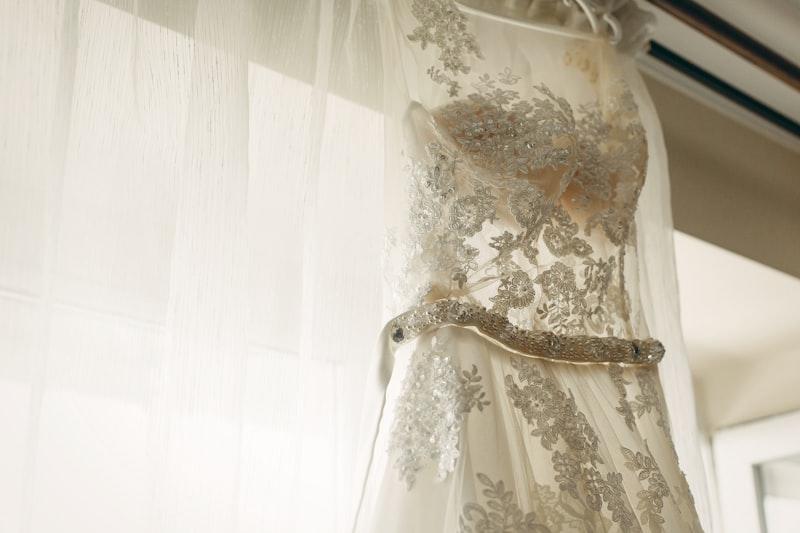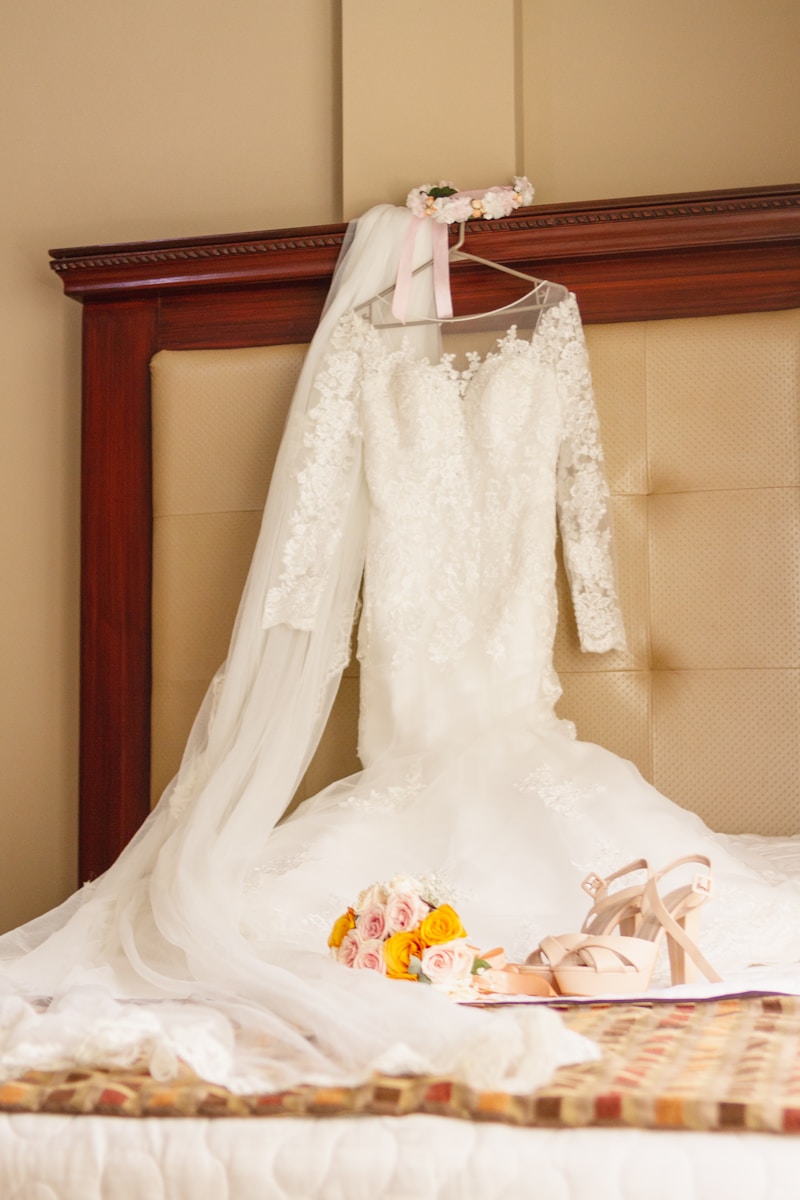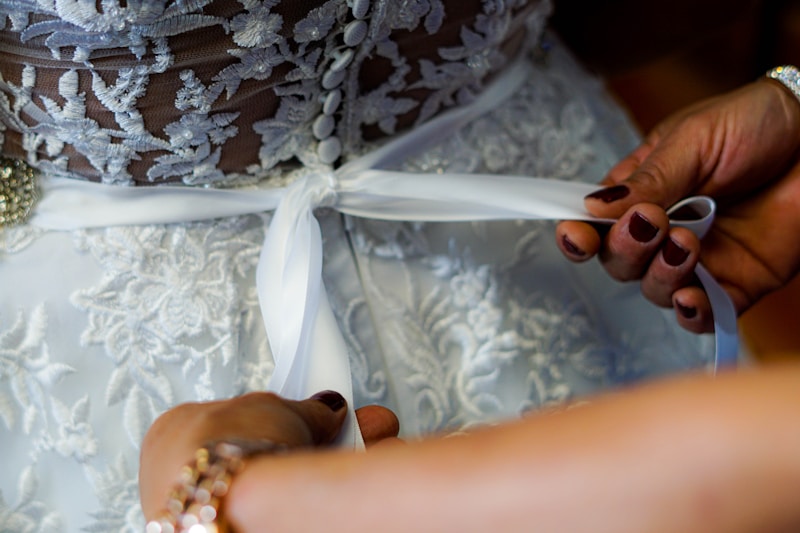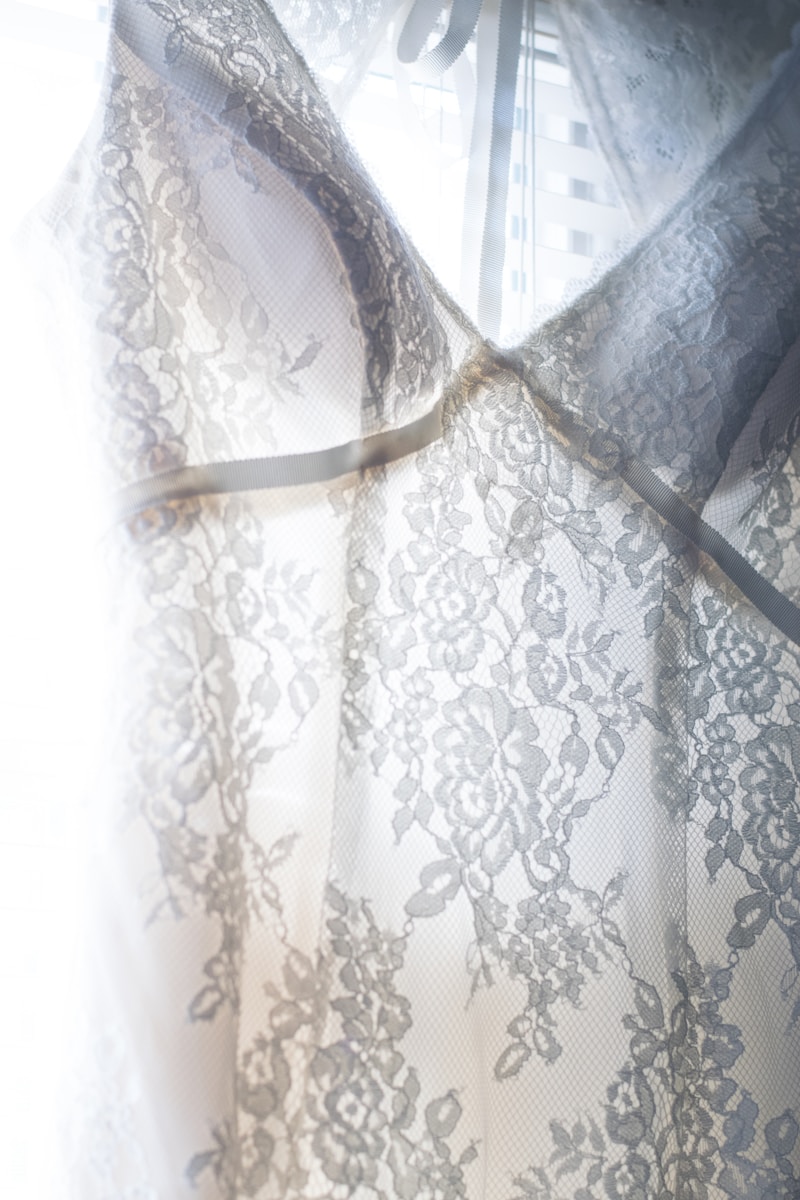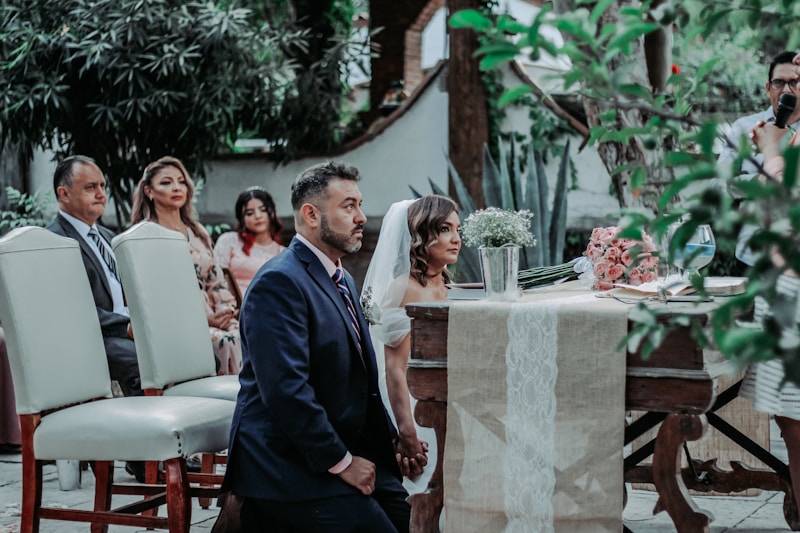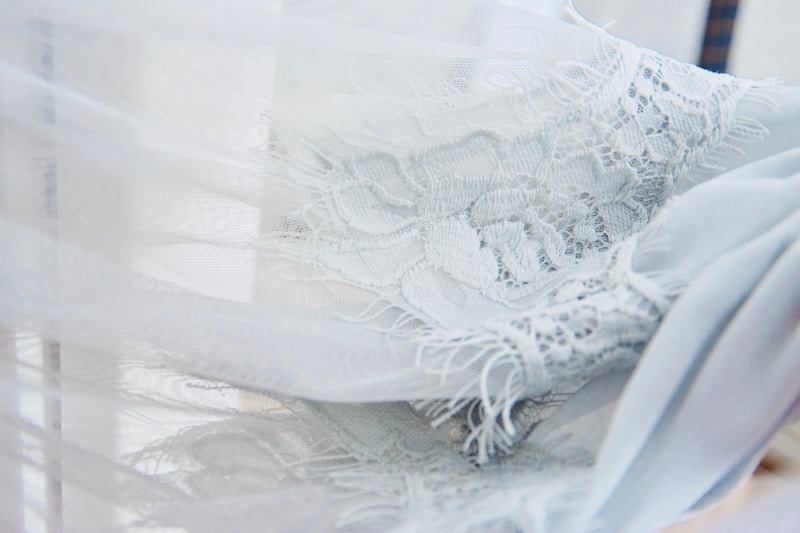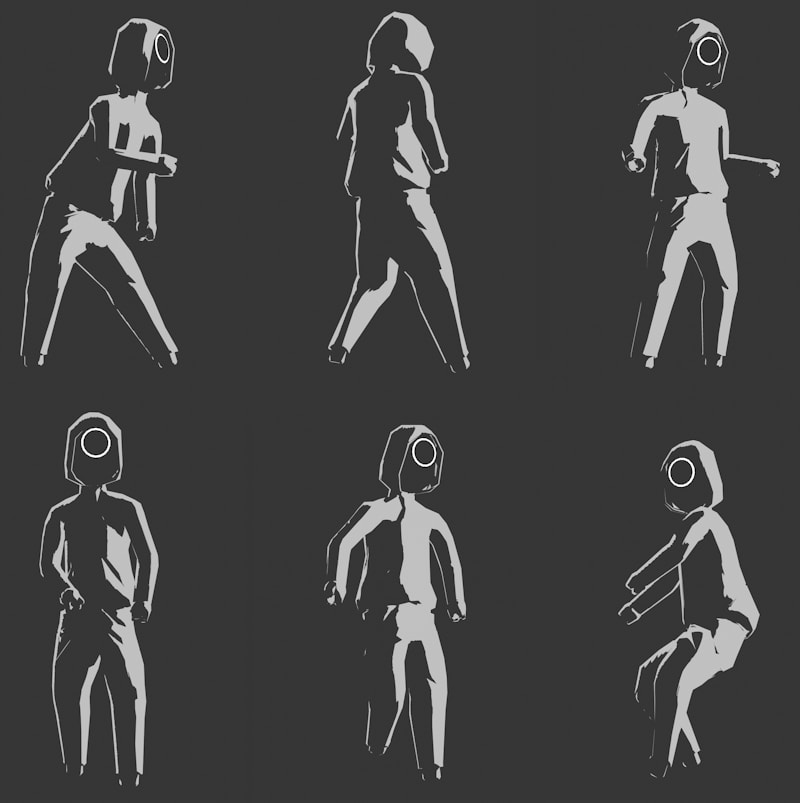Materials That Reflect Your Personal Style in Custom Wedding Dresses
Your wedding day is one of the most significant moments in your life, and what you wear plays a crucial role in creating unforgettable memories. A custom wedding dress allows you to express your individual style and personality, making your special day even more remarkable. One of the most vital components of creating a custom wedding dress is the selection of materials. In this article, we’ll explore the various materials that can reflect your personal style and how to choose the right ones for your dream dress.Understanding the Role of Fabric in Wedding DressesWhen designing a wedding dress, the choice of fabric is just as important as the cut and design. The fabric not only determines the look and feel of the dress but also influences how it moves and drapes on your body. Here are some common materials used in custom wedding dresses:MaterialDescriptionSatinA smooth, shiny fabric that has a luxurious feel and elegant drape.LaceIntricate and delicate fabric that adds texture and romantic flair.ChiffonA lightweight, flowy material perfect for ethereal and whimsical designs.TulleA net-like fabric ideal for creating volume and structure, often used in skirts.SilkA natural fabric known for its softness and luxurious look, available in various weights.OrganzaA thin, crisp fabric that provides structure and can be layered for added dimension.CrepeA textured fabric that offers a modern, sophisticated feel, perfect for sleek designs.VelvetA plush and rich fabric that adds depth and ...
Creating Your Perfect Wedding Dress Experience: A Comprehensive Guide
Customizing Your Dream Wedding Dress ExperienceYour wedding day is one of the most memorable moments in your life, and choosing the perfect wedding dress plays a significant role in making that day special. However, the journey to finding and customizing your dream wedding dress can often feel overwhelming. In this guide, we will explore various ways to personalize your wedding dress experience, ensuring that you look and feel your best on your big day.Understanding the Importance of CustomizationCustomizing your wedding dress allows you to showcase your unique style and personality. Whether you envision a classic ball gown or a sleek, modern silhouette, tailoring your dress can make all the difference. Customization not only enhances the fit but also allows you to include personal touches that reflect your story as a couple.Choosing the Right FabricThe first step in customizing your wedding dress is selecting the right fabric. The material you choose can significantly impact the dress's overall look and feel. Common fabric options include:FabricDescriptionSatinA luxurious fabric with a smooth finish, ideal for elegant gowns.LacePerfect for vintage-inspired dresses, lace adds texture and depth.ChiffonA lightweight, flowing fabric that creates a dreamy aesthetic.TulleKnown for its delicate netting, tulle is great for creating volume.OrganzaA crisp, thin fabric often used to add layers and structure.Choosing the right fabric often depends on the wedding theme, season, and your ...
The Journey from Sketch to Finished Product: A Comprehensive Guide
Every great product begins as an idea, often sketched on a piece of paper. The transition from a simple sketch to a finished product is a complex yet rewarding journey that involves several stages, each contributing to the overall success of the final outcome. In this article, we explore the intricate process of transforming an initial concept into a tangible product, providing insights, tips, and a structured approach to ensure success.Understanding the Design ProcessThe design process is foundational to developing a product. It involves brainstorming, ideation, and refining concepts. Here’s a brief overview of the key phases: Ideation: Generating ideas through brainstorming sessions and research. Sketching: Creating preliminary sketches to visualize concepts. Prototyping: Developing a working model to test viability. Testing: Evaluating the prototype through user feedback. Finalization: Making adjustments and preparing for production.The Importance of Initial SketchesIn the ideation phase, sketches serve as the initial visual representation of ideas. They help in conceptualizing the product's features, functionalities, and overall aesthetics. Here, creativity reigns supreme, and sketches can take the form of simple doodles or detailed drawings. This stage is crucial because: It allows designers to develop their thoughts visually. Sketches facilitate communication among team members. They provide a reference point for later stages of development.Creat...
Ultimate Styling Tips for Accentuating Your Bridal Shape
Choosing the perfect bridal gown is one of the most significant decisions a bride makes her wedding day. Not only does the dress need to be beautiful, but it must also flatter the bride's unique body shape. Below, we explore styling tips for accentuating your bridal shape, ensuring you look stunning on your big day.Understanding Your Body ShapeBefore diving into specific styling tips, it's crucial to understand the different body shapes that brides may have. Here are the most common ones:Body ShapeCharacteristicsBest Dress StylesHourglassDefined waist, balanced bust and hipsMermaid, A-lineAthleticStraight body, less defined waistEmpire waist, sheathPearNarrow shoulders, wider hipsBall gown, A-lineAppleBroader shoulders, fuller bustEmpire, wrap dressesInverted TriangleNarrow hips, wider shouldersBall gown, A-lineStyling Tips for Different Body Shapes1. Hourglass ShapeIf you have an hourglass figure, you are lucky! This body shape is often considered the epitome of balanced proportions. To accentuate your curves, opt for dresses that highlight your waist. Choose styles such as:Mermaid gowns which hug your body and flare out at the knee.A-line dresses that define the waist and allow flowy movement.2. Athletic ShapeFor brides with an athletic shape, the aim is to create curves. Look for dresses that add volume and dimension to your figure, such as:Empire waist gowns that cinch just under the bust, flowing into a skirt.Sheath dresses with embellishments or ruffles to enhance your ...
Smart Spending on Bridal Fashion: Tips for Budget-Conscious Brides
Weddings are often seen as once-in-a-lifetime events, and brides naturally want to look their best. However, the high costs associated with bridal fashion can be daunting. In this article, we will explore smart spending on bridal fashion by offering practical tips and insights into how to save on wedding attire without compromising on style. We’ll cover everything from gowns to accessories, unveiling ways to make your bridal look both stunning and affordable.Understanding Bridal Fashion CostsThe wedding industry is vast, with bridal fashion playing a significant role. According to recent statistics, brides spend an average of $1,500 to $3,000 on their wedding gowns alone. Additional costs for bridesmaids' dresses, shoes, and accessories can quickly pile up, leading many brides to feel overwhelmed. To navigate this financial landscape, it’s essential to understand where your money goes and how you can make smart choices.Breakdown of Bridal Fashion ExpensesItemAverage CostTips to SaveWedding Gown$1,500 - $3,000Consider sample sales or online retailersBridesmaids' Dresses$100 - $300 eachChoose a versatile dress that can be worn againShoes$100 - $300Look for sales or rent footwearAccessories (Veil, Jewelry)$200 - $700DIY or borrow from friendsSetting a Realistic Bridal BudgetBefore diving into the world of bridal fashion, it’s crucial to set a realistic budget. Analyze your overall wedding expenses and determine how much you can allocate specifically for your bridal attire. This ...
Understanding the Comparison of Wedding Dress Return Policies
Planning for a wedding can be a breathtaking journey, filled with excitement but also packed with numerous decisions. One of the most critical decisions is finding the perfect wedding dress. However, once you've chosen that beautiful gown, understanding the return policies of wedding dress retailers is essential. In this guide, we delve deep into the comparison of wedding dress return policies to help make your purchase as stress-free as possible.Why Wedding Dress Return Policies MatterA wedding dress is often one of the most significant investments a bride makes for her big day. However, there are numerous factors to consider, such as fit, fabric, and overall satisfaction. Understanding a shop's return policy can save you time, money, and potentially emotional distress. Many brides have found themselves in situations where a dress did not meet their expectations or fit as desired, making knowledge of return policies crucial.Common Factors Affecting Return PoliciesDifferent retailers have different reasons for their return policies. Here are some common factors:Customization: Many wedding dresses are custom-made, which can restrict return options.Time Frame: Most retailers specify a limited time frame within which returns are accepted.Condition Requirements: Dresses must often be unworn and in original condition for a return to be valid.Common Types of Return PoliciesWhen comparing wedding dress return policies, it’s helpful to know the different types that retailers commonly...
Creating Contrast: Layering Different Fabrics in Bridal Dresses
In the world of bridal fashion, the art of layering different fabrics creates stunning contrasts that can elevate a wedding dress from ordinary to extraordinary. As brides seek unique ways to express their personalities on their special day, utilizing various textures, colors, and fabrics offers an innovative approach to bridal design. This article explores the nuances of creating contrast through fabric layering in bridal dresses, including styles, trends, and tips for brides-to-be.The Magic of Fabric LayeringLayering fabrics in bridal dresses is akin to painting with textiles. Different materials can convey various moods, making the dress not only a symbol of the wedding but also a testament to the bride's individuality. When done correctly, the combination of fabrics can enhance the silhouette and create visual interest. Here are some popular fabrics commonly layered in bridal gowns:Fabric TypeCharacteristicsTulleLightweight, airy, often used for skirts and overlays.SatinLuxurious, glossy finish; typically used for the main bodice.LaceIntricate, timeless, adds texture and detail to the gown.ChiffonSoft, flowing fabric casting gentle layers; perfect for romantic looks.OrganzaStiffer than chiffon, adds structure and volume.VelvetRich in texture, ideal for evening weddings.Creating Aesthetic AppealThe goal of layering different fabrics is to create a stunning visual effect. When combining materials, it's crucial to consider the dress's overall aesthetic. The interplay between...
Exploring the Emotional Aspects of Custom Wedding Dress Design
Weddings are significant milestones in our lives, and the attire we choose to wear on this special day is a vital element. Among the various choices a bride has, the process of designing a custom wedding dress stands out not just for its elegance but for its deep emotional significance.Understanding the Emotional ConnectionCustom wedding dress design is not just about fabric and stitching; it encapsulates the hopes, dreams, and personal stories of the bride. The emotional journey begins long before the dress is made. Here are some of the aspects that contribute to this emotional experience:Emotional AspectDescriptionPersonal ExpressionThe dress reflects the bride's individuality, showcasing her style, preferences, and personality.SentimentalityIncorporating family heirlooms or sentimental fabrics can evoke memories and feelings.ConfidenceWearing a dress that feels uniquely hers can boost the bride's self-esteem on her big day.Connection to TraditionCustom designs can merge contemporary styles with traditional elements, honoring cultural heritage.The Design Process: A Journey of EmotionsThe journey of designing a custom wedding dress is as significant as the final product. From the moment a bride starts to conceptualize her dress, she embarks on an emotional adventure. Here’s how the design process unfolds:1. Inspiration and IdeasThe initial phase begins with gathering inspiration. Brides often look at various resources, including fashion magazines, Pinterest boards, and desig...
Exploring Embroidery Styles for Your Gown: A Guide to Choosing the Perfect Design
Unveiling the Art of EmbroideryWhen it comes to creating the perfect gown, the intricate details often make the most significant impact. Among those details, embroidery plays a crucial role in enhancing the beauty and sophistication of a garment. Whether you're preparing for a wedding, a prom, or any special occasion, understanding the various embroidery styles can help you choose the perfect design for your gown. In this article, we will delve into exploring embroidery styles for your gown, discussing various techniques, style inspirations, and tips to personalize your dress.Understanding the Basics of EmbroideryEmbroidery is the art of decorating fabric using a needle and thread or yarn. It can be applied to a variety of textiles and garments, including gowns, to add texture, color, and intricate design elements. Different embroidery styles can dramatically change the appearance of your gown, making it unique to your personal taste and the occasion.Types of Embroidery StylesThere are several types of embroidery styles that you may consider when customizing your gown:Embroidery StyleDescription1. Hand EmbroideryThis traditional method involves stitching designs by hand, allowing for personalized touches and meticulous craftsmanship.2. Machine EmbroideryUtilizes advanced machines to create patterns, making it faster and more consistent while offering a wide range of designs.3. AppliquéA technique where pieces of fabric are sewn onto the gown to create a layered design, provid...
The Influence of Seasonal Fabrics on Wedding Dress Selection
Weddings symbolize love and unity, and one of the most critical elements of a wedding is the wedding dress. With numerous styles, designs, and fabrics to choose from, the selection process can overwhelm brides-to-be. One of the most significant factors influencing wedding dress selection is the season in which the wedding takes place. Different seasons call for various fabrics, which can dramatically affect the look, feel, and comfort of a wedding gown. In this article, we will explore the influence of seasonal fabrics on wedding dress selection, providing insights into the best choices for each season.Understanding the Seasonal Changes in Fabric ChoicesWedding dresses are not only a reflection of personal style but are also influenced by the season. The selection of fabrics plays a pivotal role in determining the overall aesthetic and comfort of the dress. Here’s a breakdown of how seasonal changes affect fabric choices for wedding dresses.SeasonRecommended FabricsConsiderationsSpringLace, Chiffon, TulleLightweight, breathable options that can incorporate floral patterns.SummerSilk, Organza, SatinOpt for airy fabrics that allow freedom of movement in warm temperatures.FallVelvet, Mikado, Silk MikadoRicher textures and warm colors that complement autumn hues.WinterBrocade, Heavy Silk, SatinHeavier fabrics that provide warmth and can feature intricate details.Spring Wedding Dresses: Embrace Light and Airy FabricsSpring weddings often symbolize new beginnings, making them an id...
How to Incorporate Cultural Fabrics into Your Wedding Dress Design
Weddings are a celebration of love and unity, and increasingly, they are a reflection of individual and cultural identities. One of the most beautiful ways to honor your heritage is by incorporating cultural fabrics into your wedding dress design. In this article, we will explore how you can seamlessly blend traditional textiles with modern design elements, offering tips and advice along the way. Additionally, we will provide examples of various cultural fabrics that are popular for weddings, as well as FAQs related to this exciting topic.The Significance of Cultural Fabrics in Wedding DressesCultural fabrics have a unique ability to tell stories, express identity, and connect individuals to their roots. When choosing to incorporate cultural fabrics into your wedding dress design, you are not just selecting a material; you are weaving in history, tradition, and personal significance. Here are some reasons why cultural fabrics are significant: Symbolism: Fabrics can represent love, commitment, and familial ties. Heritage: They celebrate your cultural background and personal history. Uniqueness: Infusing traditional textiles ensures your dress is one-of-a-kind.Exploring Various Cultural FabricsThere are countless fabrics from around the world that can be beautifully incorporated into wedding dress designs. Below are some popular cultural fabrics and their characteristics:Fabric TypeOriginCharacteristicsUsage in Wedding DressSilkChina, IndiaLuxurious, smooth, and elegantFlowi...
Special Considerations for Plus-Size Wedding Dress Fabrics
Your Dream Wedding Starts with the Right FabricWhen planning a wedding, one of the most significant decisions is choosing the perfect wedding dress. For plus-size brides, finding a gown that flatters their figure while ensuring comfort is paramount. However, the choice of fabric can make all the difference in how the dress looks and feels. In this article, we will explore special considerations for plus-size wedding dress fabrics, offering valuable insights and recommendations that will help you make a well-informed choice.Understanding Different Fabric TypesWedding dresses come in a myriad of fabrics, each providing distinct aesthetics and sensations. Here is a quick overview of some common wedding dress materials:FabricDescriptionSilkLuxurious and smooth, silk drapes beautifully, making it ideal for elegant styles.TulleA lightweight netting that adds volume and charm, perfect for layers and veils.ChiffonSoft and flowy, chiffon creates a romantic look but may require lining for support.LaceA delicate option that adds texture and femininity, often used as an overlay.CrepeVery soft with a bit of stretch, crepe hugs curves and offers a comfortable fit.Key Considerations for Plus-Size Fabric Selection1. Fabric Weight and StructureWhen selecting fabrics for plus-size wedding dresses, consider the weight and structure. Heavier fabrics, like satin or crepe, can provide structure and support, which is often beneficial for plus-size brides. Lightweight fabrics may cling to certain ar...
Exploring Customization Options for Wedding Gowns: A Guide to Your Perfect Dress
Your wedding day is one of the most important events in your life, and finding the perfect wedding gown is essential to making it memorable. While ready-made dresses can be beautiful, customization options for wedding gowns allow brides to create a unique piece that reflects their personal style and love story. In this article, we will explore the various customization options available, discuss how to choose the right style, and provide tips for navigating the customization process effectively.Understanding Customization OptionsCustomization options for wedding gowns can include everything from fabric choice and color to necklines, silhouettes, and intricate details. Below is a summary of the main customization features that brides-to-be can consider:Customization FeatureDescriptionFabricChoose materials like satin, lace, tulle, or chiffon to achieve the desired texture and look.ColorSelect from traditional shades, such as white or ivory, or go bold with colors that express your personality.NecklinesOpt for various necklines like sweetheart, V-neck, or off-the-shoulder to suit your style.SilhouettesFrom A-line and ball gown to mermaid and sheath, the silhouette defines your gown's overall shape.EmbellishmentsAdd beading, sequins, embroidery, or lace appliqués for an elegant, personal touch.LengthCustom length adjustments can ensure a perfect fit, whether you want a floor-length gown or a chic tea-length dress.Choosing the Right Style for Your WeddingOne of the most crucial s...
Behind the Scenes of Wedding Dress Design: A Journey into Elegance
Understanding Wedding Dress Design: The Creative Process UncoveredWhen it comes to weddings, the wedding dress is one of the most critical elements. It embodies the bride’s personality, dreams, and aspirations. But have you ever wondered what goes into designing these exquisite gowns? Join us as we delve into the fascinating world of wedding dress design, uncovering the creativity, craftsmanship, and effort that goes behind each stunning piece.The Artistic Vision: Inspiration Behind Wedding Dress DesignEvery designer has a unique vision that drives their creations. The inspiration for wedding dresses often comes from various sources, including: Historical fashion trends Cultural traditions Nature's beauty Art and architectureFor instance, many contemporary designers look back to vintage styles to inspire their collections, integrating lace details or classic silhouettes that echo past eras. By understanding these influences, we can appreciate the multidimensional artistry involved in wedding dress design.The Design Process: From Sketch to DressCreating a wedding dress is a meticulous process that involves several stages: Step Description 1. Conceptualization Designers sketch initial ideas based on inspirations and client preferences. 2. Fabric Selection Choosing high-quality fabrics that enhance design and fit is crucial. 3. Prototyping Creating a muslin prototype to assess the design and fit is essential. 4. Final Design Re...
Decoding the World of Wedding Dress Pricing: What You Need to Know
Planning a wedding can be one of the most exciting yet stressful experiences in life, and one of the most significant decisions you'll face involves choosing the perfect wedding dress. However, as you embark on this journey, you're likely to encounter one critical question: "Why are wedding dresses priced the way they are?" In this article, we will explore the factors that affect wedding dress pricing, provide insights into the average costs, and help you decode the world of wedding dress pricing.The Cost of a Dream: Understanding Wedding Dress PricingWedding dresses can vary significantly in price, ranging from a few hundred dollars to tens of thousands. This disparity often leaves brides-to-be confused. The factors influencing these prices include:FactorsDescriptionDesigner LabelFamous designers often charge a premium for their brand and reputation.Materials UsedHigh-quality fabrics and embellishments increase costs significantly.CustomizationPersonalized elements can elevate the price accordingly.LocationGeographic location can influence pricing due to demand and cost of living.SeasonCertain times of the year may see spikes in price due to demand.What Affects the Price of Your Wedding Dress?As highlighted in the table above, several key factors directly influence wedding dress pricing. Let's delve deeper into each aspect:1. Designer LabelDesigner wedding dresses are often seen as a symbol of status and style. Renowned designers like Vera Wang or Monique Lhuillier typically...
Unleashing Creativity: Unique Embellishments for Bridal Gowns
When it comes to weddings, bridal gowns are often the centerpiece of the celebration. As trends evolve, brides are constantly on the lookout for creative embellishments for bridal gowns that add a personal touch to their attire. In this article, we will explore various embellishment options, their meanings, and how to seamlessly incorporate them into your dream wedding gown. We’ll also touch on related bridal fashion queries, ensuring you have all the information needed to make your special day unique.The Importance of EmbellishmentsBridal gown embellishments serve more than just aesthetic purposes; they carry sentimental value and can reflect the bride's personality and style. From intricate lace appliqués to sparkling sequins, each embellishment tells a story. In this section, we’ll discuss popular embellishment options and their significance.Types of Creative EmbellishmentsEmbellishment TypeDescriptionBest ForLace AppliquésDelicate pieces of lace sewn onto the gown for a vintage look.Romantic or vintage-themed weddings.BeadingSmall beads sewn into patterns for added sparkle.Formal or glamorous weddings.SequinsShiny discs attached to the gown, reflecting light beautifully.Evening or modern weddings.EmbroideryIntricate designs stitched onto the fabric for a personalized touch.Customized designs reflecting the bride’s story.FeathersSoft feathers can add a playful and whimsical element.Bohemian or nature-themed weddings.Ribbons and SashesFabric bands tied around the waist for ...
Wedding Attire Budgeting Tips for Modern Brides
Planning a wedding can be one of the most exciting yet challenging experiences in a person’s life, and one of the most significant expenditures typically involves wedding attire. With contemporary bridal fashion evolving rapidly, modern brides are faced with numerous options that can easily lead to overspending. In this article, we'll explore essential wedding attire budgeting tips for modern brides to help ensure that you not only look stunning but also stay within your financial plan. Understanding Your Wedding Attire Needs Before diving into budgeting specifics, it's crucial to understand the various components of wedding attire. For modern brides, this may include: The wedding dress Veils and headpieces Jewelry and accessories Shoes Bridesmaid dresses Alterations and cleaning costs Wedding Dress Costs The wedding dress is typically the centerpiece of a bride's attire, and costs can vary dramatically based on style, designer, and fabric. In the United States, for instance, the average cost of a wedding dress can range anywhere from $1,000 to $3,000. However, designer dresses can go well beyond this range. Budgeting for Accessories and Alterations Accessories can enhance the overall look and are often overlooked when budgeting. Expect to allocate around $200 to $500 for veils, shoes, and jewelry. Additionally, alterations are usually necessary to ensure a perfect fit, which can cost between $100 to $300. Effectiv...
Unlocking Opportunities: Networking in the Wedding Industry
In the vibrant world of the wedding industry, effective networking can be the key to success. As couples seek to create unforgettable experiences on their special day, professionals in the industry can benefit tremendously from building relationships with each other. In this article, we will explore the importance of networking in the wedding industry, various strategies to enhance your network, and tips to maximize your connections.The Importance of Networking in the Wedding IndustryNetworking is not just about exchanging business cards; it is about building lasting relationships that can lead to partnerships, referrals, and collaborations. In an industry where creativity and client service are paramount, having a robust network can help you stand out in the competitive landscape. Here are some key benefits of networking: Increased Referrals: Satisfied clients often rely on recommendations from their trusted vendors. A well-connected professional can generate referrals that significantly boost business. Collaboration Opportunities: Working alongside other industry professionals can enhance your service offerings and create unique wedding experiences for clients. Access to Resources: Networking provides access to resources such as venues, florists, catering services, and various vendors, allowing for smoother planning and execution of weddings. Market Insights: By engaging with peers, professionals can gain insights into market trends, pricing strategies, and emer...
Understanding Bridal Gown Production Timelines and Logistics
When it comes to planning a wedding, one of the most important elements that brides often focus on is the bridal gown. Selecting the perfect gown is not just about style—it's also about understanding the production timelines and logistics involved in bringing that dream dress to life. In this article, we will delve deep into the various stages of bridal gown production, the logistics that affect each stage, and how to effectively plan for them.The Bridal Gown Production ProcessThe production of a bridal gown typically involves several key stages: design, fabric selection, pattern making, sewing, and final adjustments. Below is a breakdown of these stages along with the expected timelines.StageDescriptionTimeline (Days)DesignCreating sketches and finalizing the design concept.7-14Fabric SelectionSelecting materials and sourcing fabric required for the gown.5-10Pattern MakingMaking a pattern based on the selected design.10-14SewingAssembling the gown based on the pattern.21-30Final AdjustmentsFitting and making any necessary changes.5-7Understanding Fabric SelectionChoosing the right fabric is a crucial part of the bridal gown production timeline. Fabrics such as satin, lace, tulle, and chiffon each have their own unique qualities and may impact the overall look and feel of the gown. It is advisable to allocate sufficient time for exploring options and sourcing materials. Brides should communicate with their designers about their vision and the logistics involved in fabric proc...
Unlock Your Style: Personalized Dress Designs for Unique Body Types
In today's world of fashion, the importance of personalized dress designs tailored to unique body types cannot be overstated. People come in all shapes and sizes, and understanding how to accentuate one's body while maintaining comfort can truly transform the way one feels. This article dives deep into the world of personalized dress designs, highlighting techniques, styles, and considerations for achieving the best fit.The Importance of Personalized Dress DesignsPersonalized dress designs cater to individual preferences and body shapes, ensuring that everyone can find something that enhances their natural beauty. Factors contributing to the need for personalized designs include: Unique Body Types: Each person has a distinct shape that can be best complimented by different styles. Comfort and Fit: A well-fitted dress can significantly improve comfort, boosting confidence. Personal Style: Fashion should reflect one’s personality; personalized designs allow for this expression. Body Type Suitable Dress Styles Key Features A-Shape Empire Waist, A-Line Accentuates the waist while flowing over hips Apple Shape Wrap Dress, Shift Dress The dresses define the waist and mask the midsection Hourglass Bodycon, Fit-and-Flare Emphasizes curves and proportions Rectangle Peplum, Fit-and-Flare Creates the illusion of curves Inverted Triangle A-Line, Ball Gown Balances the proportions of the body Understanding You...
